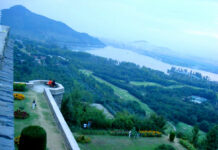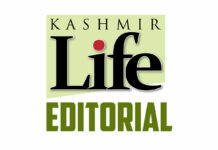Kashmir’sMinister of EducationPeerzada Mohammad Sayed has said this week that Jammu and Kashmir has recorded approximately a 15% increase in the literacy during the past five years. Sayed said that “this has become possible with massive expansion of educational facilities in the state.”
While this is something that should be appreciated as progress, a critical assessment of the Kashmiri education system is crucial. J&K may very well be rapidly expanding its educational facilities, thereby leading to the increase in the literacy rate, but can quantity overshadow quality? Today, many government schools lack proper sanitation facilities and proper furnishing. Many struggle to hold regular classes due to the limited number of teachers, or the abundance of inexperienced ones. Still others have an infrastructural void that leads to problems on several levels—problems that range from being embarrassing to appalling.
As is the case with several institutions in J&K, schools and universities also fall victim to the seemingly incurable disease of office politics. Mismanagement, misappropriation of funds, unethical selections and equally unethical terminations are all clich?d variations found at the highest echelons of the education industry in Kashmir. But as the African proverb says, when elephants fight, it is the grass that suffers. And no percentages from any minister or visible expansion of schools can heal a nation of such a disease. That cure needs a grassroots approach, and a concerted effort by positive-minded individuals.
As our children gradually rise from their primary school education to one at a university level, we must ponder the extent to which they are really progressing as responsible adults. From a broad perspective, one may realize that there are several pieces missing in our education puzzle.
Do advanced degrees herehelp encourage critical thinking, or passive memorization in the minds of young Kashmiris? Is the environment at an institute of higher education conducive towards a comprehensive educational experience for a student, or does the environment breed mediocrity in the guise of unhealthy competition? Even after attaining a university degree, many young Kashmiris have not developed the maturity or sovereignty of thought required to live and work independently to start their careers.
From a one dimensional point of view, there might be a seemingly positive picture of Kashmir’s educationa
l scenario. But there are still many miles to go on the road towards a truly comprehensive education system in the state. The above offers just a glimpse into the many gaping holes in our education system. It would be unwise to give that system a stellar grade without taking all elements into consideration. After all, it is the future of our children, the future of Kashmir that is at stake.









